Have you ever felt like your creative spark is running out, and you’re repeating the same ideas? Staying unique is important nowadays. Especially if you want to stand out among the rest in the competition; however, the constant pressure of creating can really hurt your creativity. Despite numerous digital tools at our disposal, many artists and musicians struggle with outdated traditional methods. It’s like painting with dull crayons. Repetitive tasks can drain your energy and kill inspiration. And let’s be honest about the cutthroat competition; there’s no place for mediocre work.
But what if there was a way to break free from these creative constraints? Say hello to generative AI, which is a game-changer for artists and musicians. It’s like a secret weapon for artists and musicians. The role of generative AI in transforming art and music is crucial. It helps you overcome creative blocks and gives you the freedom to create with more flair. Generative AI fuels your imagination, apart from helping you deal with mundane tasks. Buckle up as we take you on a journey through the top ways generative AI is transforming the creative industries. We’ll also explore top AI tools for creative professionals.
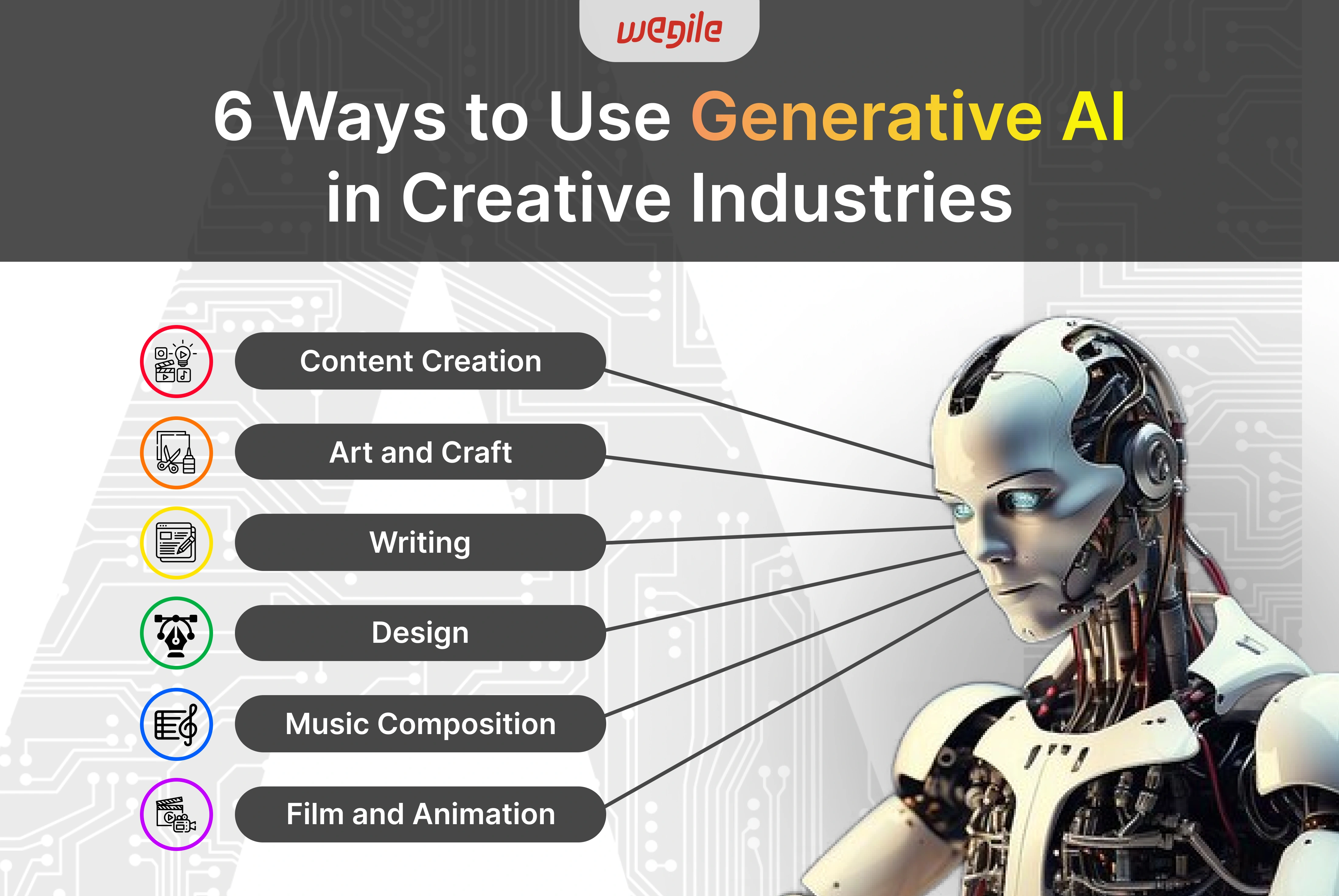
There may have been many instances where you’ve felt stuck staring at a blank page and waiting for a perfect idea to strike. But with Generative AI by your side, that’s a thing of the past! Gen AI works as a supercharged content assistant that never sleeps. It’s transforming how content creators work. Generative AI does this by automating grunt work, such as creating images, text, videos, etc. Imagine a scenario where you’re making a month's worth of social media posts for your brand in fractions of a second! Generative AI tools give you more time to focus on strategic and creative tasks. It boosts the confidence of creators by crafting content that resonates perfectly with their audience. It further maintains brand voice and consistency.
Synthesia effortlessly transforms text into video content. It uses AI to generate realistic avatars that lip-sync and convey messages in multiple languages. This helps make video creation accessible and engaging.
Jasper is your AI-powered writing assistant. It helps generate text for various content needs, from blog posts to marketing emails. It uses natural language generation to ensure clear and compelling communication.
Podcastle is an AI tool that simplifies podcast creation. It converts written content into natural-sounding audio. The tool allows creators to reach audiences through podcasts without needing professional recording equipment.
Cohere Generate is a tool that automates content generation by understanding context and generating relevant text. It's ideal for generating product descriptions, social media posts, and other marketing content. All this can be done with accuracy and speed.
Copy.ai is a versatile tool for crafting copy that converts. It allows marketers to create impactful content within a short span of time. The generative AI tool creates catchy slogans, engaging social media posts, and persuasive ad copy.
Artists are embracing generative AI as their new brushstroke of choice. Technology is helping inject a fresh dose of innovation into the world of arts and crafts. Generative AI tools are opening to new artistic realms. They generate intricate visual designs to suggest innovative material combinations. Gen AI acts as a collaborative partner as it fuels inspiration and provides ideas and techniques that artists might not have thought of. Hence, art with Generative AI is more than just art creation. It is a journey of exploration and discovery of new artistic expressions.
DALL-E uses generative AI to create images from textual descriptions. It makes unique and imaginative visuals that blend different artistic styles. The tool offers artists new avenues for creative expression.
DeepArt applies AI algorithms to transform photos into artworks inspired by famous artists and styles. It allows users to experiment with different artistic filters and effects. This is how generative AI turns ordinary images into extraordinary pieces.
Runway ML is a platform that integrates AI models into creative workflows. It supports a variety of AI-based features for artists, such as aspects such as style transfer, object detection, and natural language processing. This allows experimentation and innovation in artistic projects.
Artbreeder lets users create new artworks by blending existing images. It uses AI to generate variations of visuals. This allows artists to explore endless possibilities and refine their artistic vision through iterative experimentation.
Prisma uses AI to transform photos into artworks. It offers a variety of artistic filters and styles inspired by famous artists. It allows users to instantly apply artistic effects and enhance their photos with a touch of creativity.
Writing with generative AI is like having a brilliant co-author who has a fresh perspective. AI tools are always there to rescue you, whether it's about sparking ideas or weaving thoughts into narratives. And when it comes to drafting, generative AI doesn’t just stop at stringing words together. It fine-tunes sentences, polishes prose, and even suggests alternate phrasings to elevate your writing game. It’s like having a professional editor 24/7! This way, generative AI tools provide more time to delve into the heart of their stories and craft content that impresses readers. Hence, creativity flows, and possibilities for storytelling are boundless when AI is by your side.
ChatGPT is a generative AI tool developed by OpenAI. It is used to generate and refine text. Further, it helps writers brainstorm ideas, draft content, and answer questions. This makes the writing process smoother and more efficient.
Grammarly is an AI-powered writing assistant. It conducts tasks such as checking grammar, punctuation, and style errors. Also, it offers suggestions to enhance clarity and readability. This allows writers to produce polished and professional content.
Sudowrite is a tool used by creative writers to generate story ideas, develop characters, and craft dialogue. It uses AI to suggest plot twists and enrich narratives. This makes Sudowrite an invaluable tool for fiction writers.
WriteSonic is an AI content generator tool. It supports the creation of marketing copy, blog posts, and social media content. The tool uses natural language processing to generate engaging and relevant text. This makes Writesonic a valuable tool for saving time and effort.
Claude AI is an AI assistant designed for writing and research. It helps writers generate ideas, draft content, and find relevant information. This makes Claude AI a versatile tool for various writing tasks.
Design isn’t just about aesthetics. It’s about capturing the essence of a brand, telling stories through visuals, and staying ahead of trends. Generative AI is a key element that’s reshaping how designers approach their work. Here, the work of tools isn’t replacing creativity; it is here to enhance it. One of the most important aspects of designing is personalization, and generative AI excels in it. It tailors the design to individual preferences rather than creating one-size-fits-all solutions. Each interaction feels bespoke, whether it is product designing, developing a product prototype, or designing marketing collateral.
Canva makes designing easy for everyone. Its templates, images, and fonts allow you to create beautiful graphics. It’s perfect for both beginners and professionals.
Adobe Sensei uses AI to support your creative projects. It can perform complex tasks like editing images and creating content, making your design work faster and more creative.
Deep Dream Generator turns your photos into dream-like art. It uses AI to create unique and surreal images. This gives you a fun way to experiment with your designs.
CLO 3D helps fashion designers create 3D models of clothes. You can design, change, and present your clothing ideas in a realistic way. This makes it easier to see your designs come to life.
Planner 5D lets you design 3D homes and interiors. You can easily create and visualize rooms. This makes Planner 5D a great tool for architects and interior designers.
Music is evolving into a dynamic playground where generative AI sparks new symphonies of creativity. Picture AI algorithms collaborate with musicians to compose melodies and explore genres, rhythms, and musical territories that are still yet to be explored. This way, AI redefines music composition by expanding creative horizons from classical orchestras to futuristic beats. Artists around the world are harnessing Gen AI’s power to generate endless musical ideas from a simple prompt. These AI tools have become their virtual bandmate who is always ready with fresh inspiration. Generative AI is your partner in pushing the boundaries of musical expression, be it composing film scores or crafting chart-topping hits.
AIVA composes original music using AI. You can use it to create music for films, games, and commercials. This makes the composition process faster and more creative.
MuseNet by OpenAI can generate music in many styles. It blends different genres and instruments. This helps you create unique and interesting pieces.
Jukedeck creates custom music for your projects. You can adjust the tempo and style to fit your video, ad, or presentation perfectly.
Melodrive generates music that adapts to your interactive content. It’s great for games and VR experiences, creating dynamic and responsive music.
Light, camera, AI-action! Generative has turned out to be a transformative force in the field of film and animation. Directors and animators collaborate with AI to craft stunning visuals and streamline the editing process. Gen AI tools are further transforming how stories come to life on screen. They're enhancing CGI realism and refining characters' animations. Generative AI steps in as your digital assistant. It supports tasks such as analyzing scenes, suggesting edits, and predicting audience reactions. Also, Gen AI automates tedious tasks and frees filmmakers and animators to focus on going deeper into the storytelling aspects. Hence, AI supports creators in delivering cinematic experiences that captivate and inspire audiences worldwide.
Runway ML helps create and edit videos with AI. It offers various tools for video effects, color grading, and more. This makes the editing process faster and more creative.
NVIDIA GauGAN turns simple sketches into realistic images. You can draw basic shapes, and it will transform them into detailed scenes. The tool is perfect for creating stunning visuals.
Ebsynth animates your drawings and photos. It allows you to add motion to still images and quickly and easily create animations.
DeepMotion creates realistic animations from video. It tracks movement and turns it into animated characters. This helps animators work faster and more accurately.
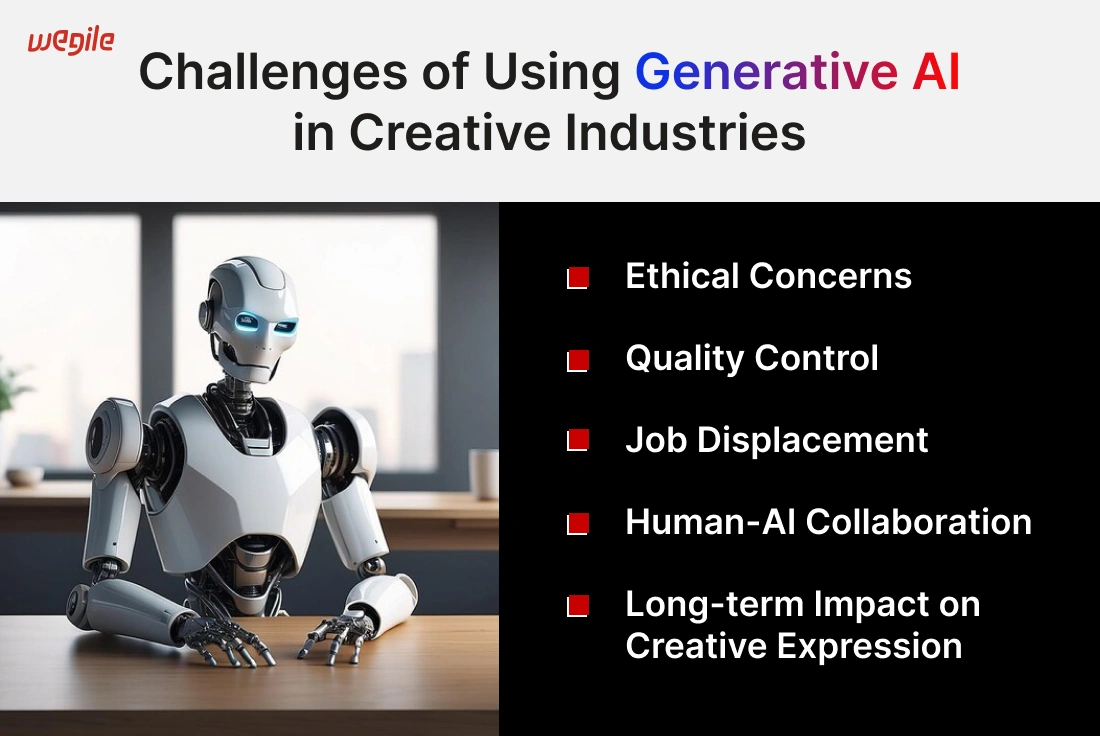
Generative AI is undeniably transforming creative industries, offering unprecedented tools for innovation and efficiency. However, this transformation is not without its challenges. This section delves into some of the more nuanced and less frequently discussed challenges associated with integrating generative AI in creative fields.
Generative AI raises significant ethical questions that are often overlooked in mainstream discussions. One major concern is the issue of authorship and originality. This ambiguity can lead to legal disputes and hinder the adoption of AI-generated content. Another ethical dilemma involves the potential for bias. AI systems learn from existing data, which can include inherent biases. When these biases are replicated in creative outputs, they can perpetuate stereotypes and cultural insensitivity. For example, an AI trained in predominantly Western art styles may struggle to generate art that accurately represents other cultures, leading to a homogenization of creative expression.
While generative AI can produce high-quality content, maintaining consistent quality remains a challenge. AI-generated content can sometimes lack the nuanced understanding and emotional depth that human creators bring to their work. This can result in outputs that feel generic or unoriginal, which may not resonate with audiences on a deeper level. Furthermore, the reliance on algorithms means that the quality of AI-generated content is directly tied to the quality of the input data. Poor-quality or biased data can lead to subpar outputs, which can undermine the credibility of AI tools in creative industries. Ensuring high-quality, diverse training data is crucial but can be resource-intensive and challenging to curate.
The automation of creative processes raises concerns about job displacement. While AI can augment human creativity, there is a fear that it could replace human jobs, particularly in roles that involve repetitive or formulaic tasks. For example, AI-generated music and art could potentially reduce the demand for commercial artists and composers. However, this challenge is multifaceted. While some jobs may be at risk, new roles and opportunities are likely to emerge. The key lies in upskilling and reskilling the workforce to adapt to this technological shift. Creative professionals may need to focus more on roles that involve overseeing AI systems, curating content, and adding a human touch to AI-generated works.
Generative AI's effectiveness is heavily dependent on the availability of large datasets. In creative industries, high-quality datasets that represent a wide range of styles and genres are crucial. However, obtaining such datasets can be challenging due to issues of copyright, privacy, and accessibility. Without diverse and comprehensive data, AI systems may produce limited or biased outputs.
Effective collaboration between humans and AI in creative processes is another challenge that is often underemphasized. While AI can assist with idea generation and technical execution, the integration of human creativity and intuition is essential for producing truly innovative and emotionally resonant work. Striking the right balance between leveraging AI's capabilities and preserving the unique qualities of human creativity is a delicate task that requires careful consideration and ongoing adjustment.
The widespread adoption of generative AI in creative industries could have long-term implications for creative expression. There is a risk that reliance on AI tools could lead to a homogenization of creative outputs, as AI systems may favor certain styles or approaches based on their training data. This could stifle diversity and innovation, leading to a more uniform and less vibrant creative landscape.
Generative AI is undeniably reshaping creative industries, from content creation to music composition and everything in between. While the potential benefits are immense, it is crucial to navigate the associated challenges with care and foresight. For those looking to explore the integration of generative AI into their creative endeavors, partnering with an experienced generative AI development company like Wegile can provide significant advantages. Wegile offers comprehensive generative AI development services tailored to meet the unique needs of creative professionals and industries. By leveraging Wegile’s expertise, you can ensure that your AI tools are both cutting-edge and aligned with your creative vision. In conclusion, the path forward involves a balanced approach, embracing the innovative power of generative AI while addressing its challenges with strategic insight and ethical consideration. By doing so, we can harness AI’s full potential to enhance creativity, drive innovation, and enrich the cultural landscape.
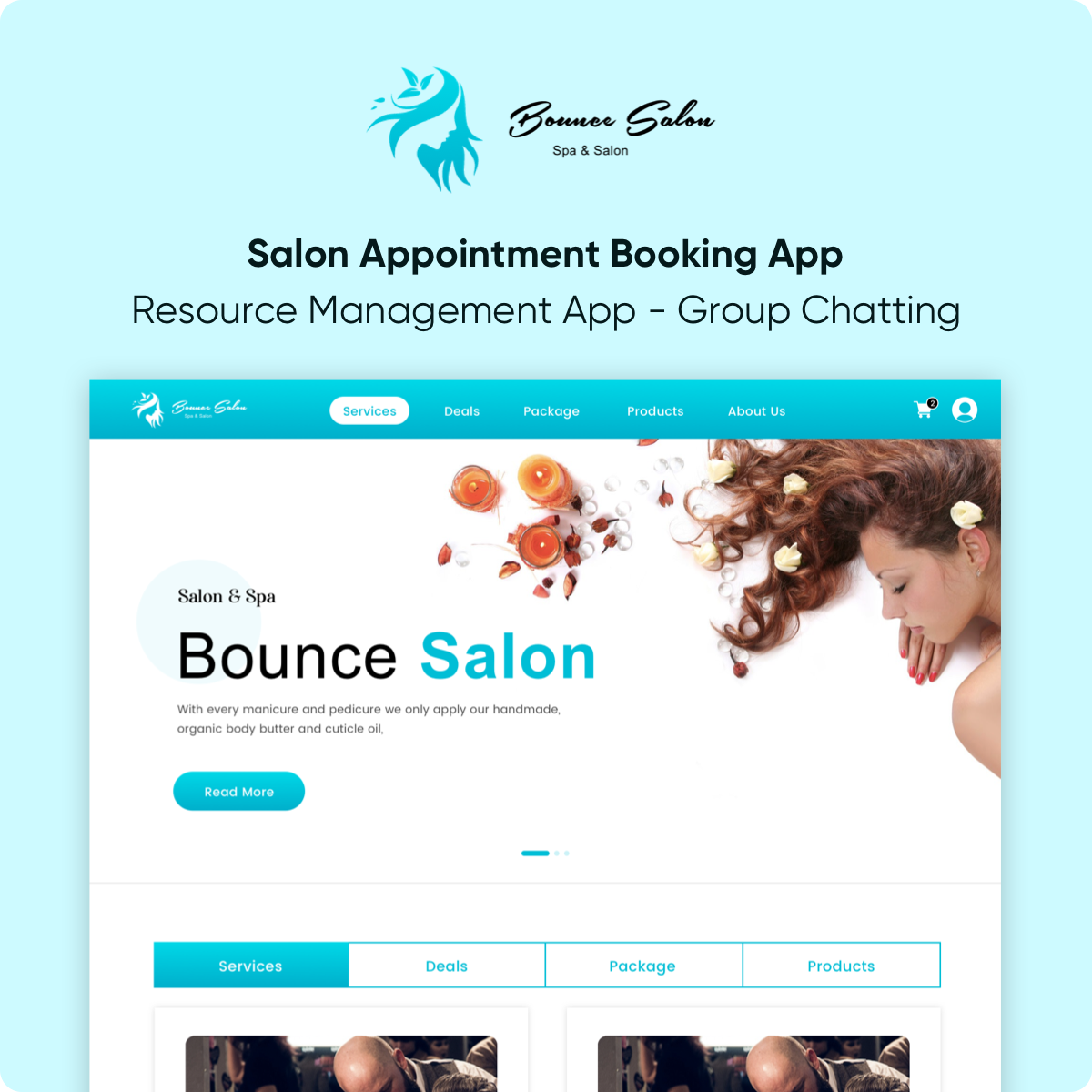
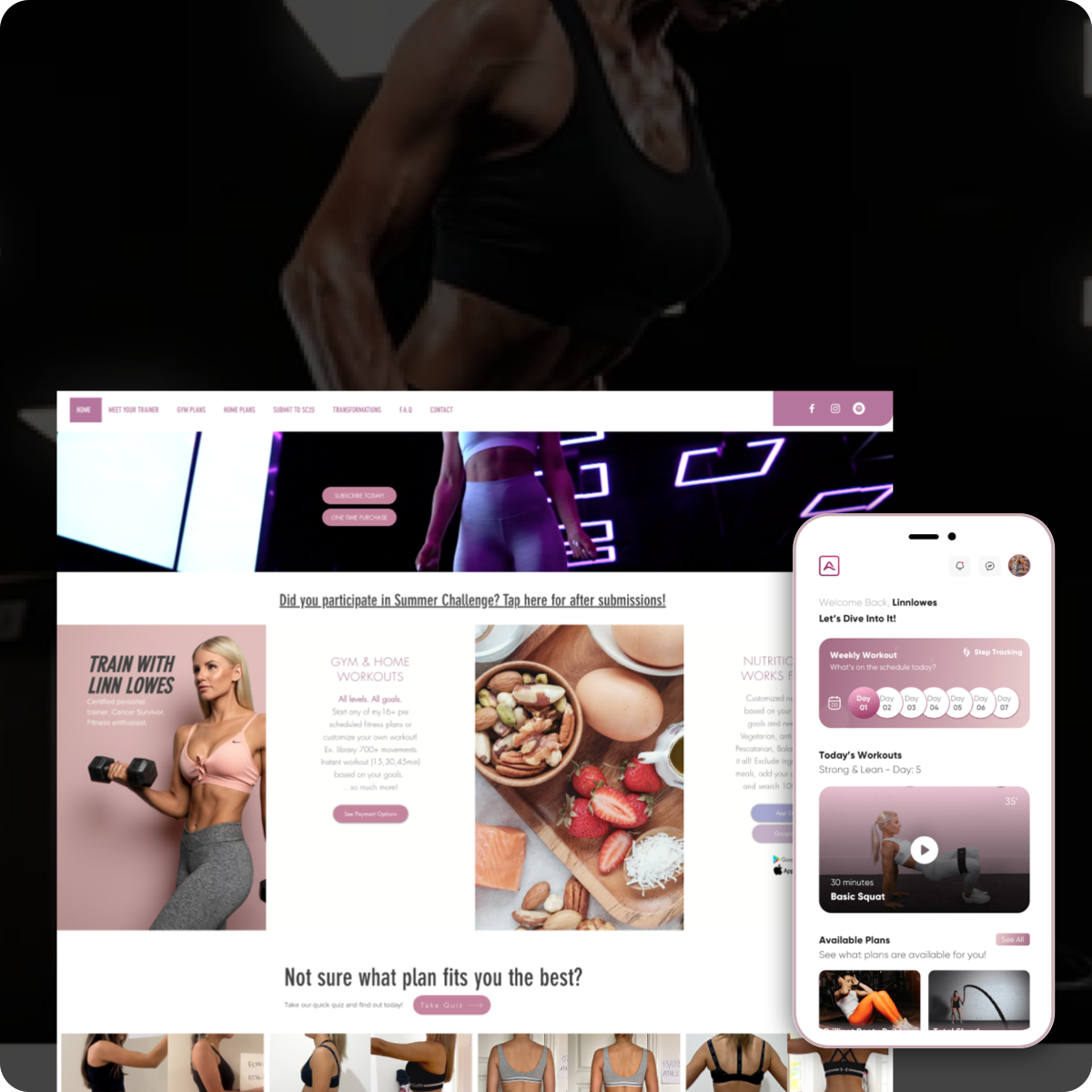
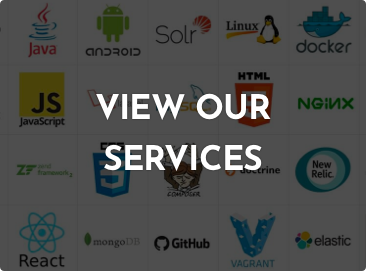 Browse Our Services
Browse Our Services
